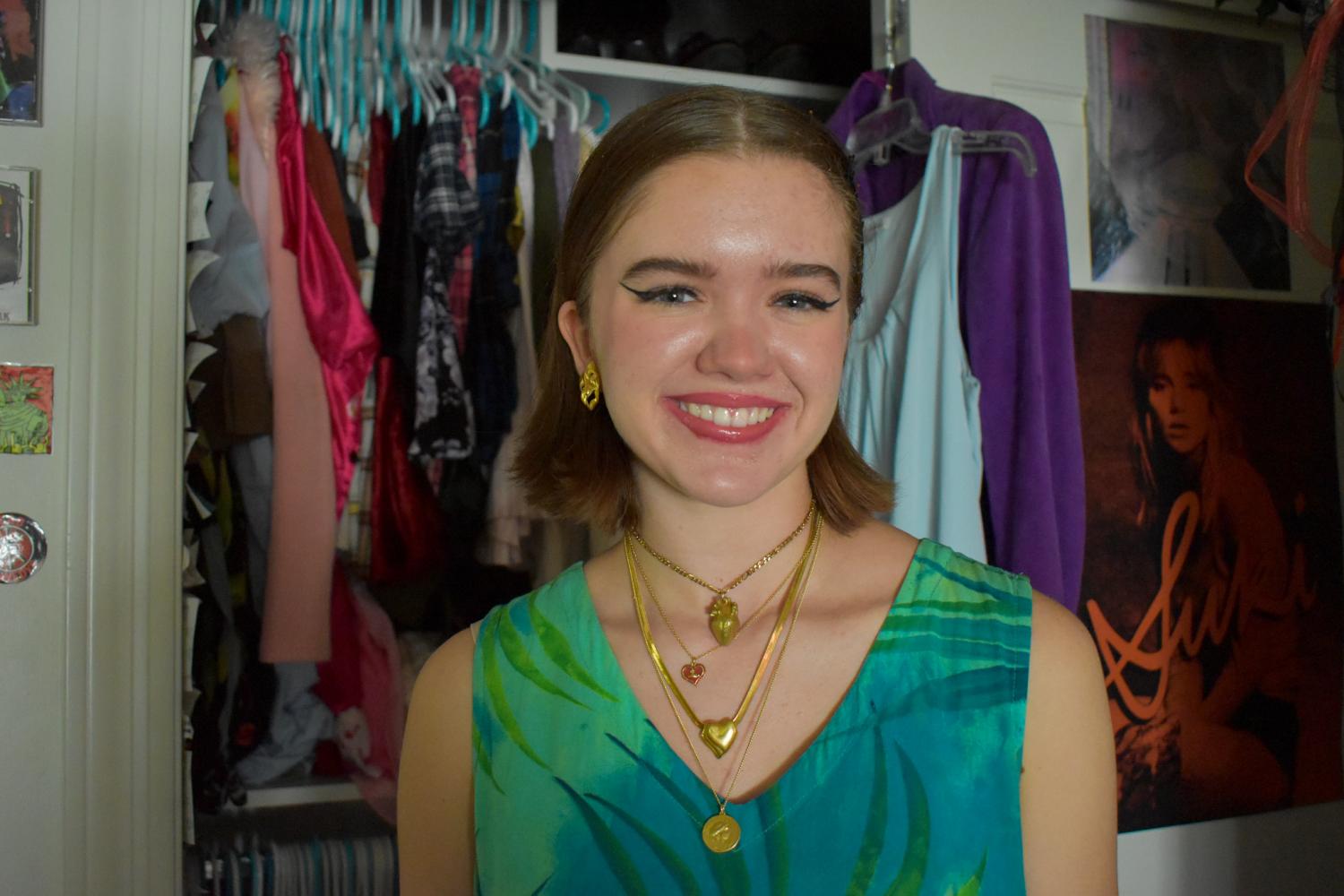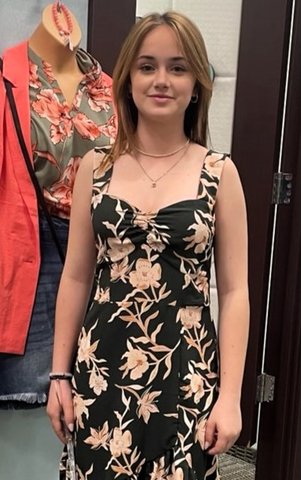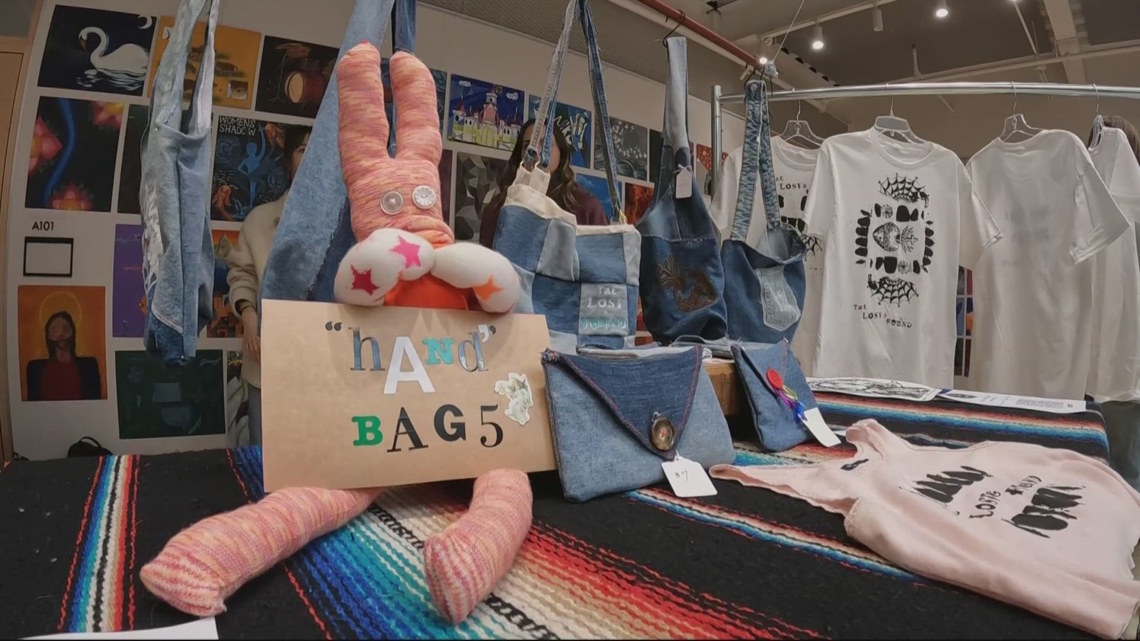In a world of ever-shifting fashion micro-trends, the so-called “coquette” aesthetic has been a mainstay on social media for years.
Audrey Treon is a fashion student at Arizona State University, and she recently wrote a Substack piece about the trend.
As she told The Show, she thinks there’s more to the story than frills, bows and lace.
AUDREY TREON: I was on TikTok a lot, probably too much. And I saw these girls posting these hauls, clothes from places like Brandy Melville or Shein, which are both pretty notorious fast fashion brands. And it would be quote unquote coquette pieces. And it just caught my attention because I didn’t know if they realized the dark origins of it. Maybe they did, maybe they didn’t.
SAM DINGMAN: Well, before we get to that part, give us a description, first, of what you mean when you, when you say coquette as a style.
TREON: I see it as you know, the aesthetics of lace and pink, really ribbons and a very innocent girlhood. And I don’t think that’s necessarily bad, but it’s defined in conjunction with terms like Lolita and Nymphet, which literally mean like older men attracted to young women. And that’s really where I kind of take issue with it because it’s not as base level as, I like the clothes. It has a deeper meaning and context behind it.
DINGMAN: Are those the darker implications of the term or the or the style that you think some of the folks posting might not be aware of?
TREON: Yeah, absolutely. You know, if I see a video on TikTok describing coquette, there’s a good chance that the book “Lolita” will be featured and a sexualized cover of the book. And I think it’s this conflation of the two, of people not fully understanding what the book is truly about. It’s not a romance, it’s not some sweet love story. It is …
TREON: Yeah. Yeah. But I think people like to look at the positives of it and look at the girlhood aspects of it. You know, getting back in touch with your girlhood and something that is very special and very intimate and take those things and use them in coquette. But it’s hard in my mind to separate the two from each other in the context of the book.
DINGMAN: So another provocative argument that you’re making in this piece is that you write that somebody who is dressing coquette as a feminist act of reclaiming femininity. In doing that, they are sort of asserting the idea that much like there is a male gaze, which books like “Lolita” helped to create. They are asserting the idea of a female gaze to counteract the impact of the male gaze. But you write that there’s no such thing as the female gaze. Tell me why you feel that way.
TREON: I think, as kind of bleak as it is, the male gaze exists because we live in a patriarchy. And there’s a great Margaret Atwood quote that says, trying to negate the existence of the male gaze through the female gaze means that there is a male gaze. If that makes sense, there’s no way to separate the two.
DINGMAN: In order to assert the female gaze, you first have to acknowledge the unfortunate primacy of the male gaze.
DINGMAN: Well, one of the things that I think is interesting about this in your piece is you write about the fact that participating in this aesthetic on social media from a fashion standpoint could be viewed through the lens of feminism. That, that would be a possible interpretation of what folks are up to here. But you seem to be a little skeptical of that.
TREON: Yeah, I think when it comes to fast fashion and what I’ve seen in the media that has been shown to me about coquette is fast fashion hauls. And I think it’s a bit hypocritical to say, I want to reclaim my girlhood and then I do a $500 haul at Brandy Melville. All the people who made those clothes don’t get their girlhood because they’re in factories, they’re in like sweatshop factories.
DINGMAN: So another element of, of the coquette trend is the phenomenon of “bowing.” Tell us what, what bowing is.
TREON: It’s the act of just putting a little bow on everyday objects. It can get very comedic in nature. I mean, I’ve seen a picture of like a bow on a cow, with the hashtag #coquette.
DINGMAN: Yeah, I mean, it, it’s very funny. I, like you said, you see people putting bows on croissants, on pickles, on toilets, all kinds of, all kinds of hilarious things. Do you think that there is a feminist or a political valence to those posts?
TREON: I do actually. I don’t know if everybody who does it has that motivation behind it, but the way I see it, I see it as almost camp, as if like, the, I’m going to take the oppression that has been inflicted upon me by the patriarchy and make it annoying and make it uncomfortable, for lack of better words, too.
You know, it’s something that’s been put on you, like wear a bow, and then you’re gonna say, no, I’m gonna put a bow on a cow and see how you like that. Kind of reassert your power in this kind of almost comedic, ironic way.
DINGMAN: Oh, that’s interesting. So it’s, it’s, it’s almost like, fine, if you think it sexualize things to put bows on them, I guess that means you’re attracted to croissants or cows or toilets. That’s, that’s an interesting interpretation. That’s an interesting interpretation. You are a fashion student, if I’m not mistaken.
TREON: Yes, I am. I’m currently on the fashion design track. I would love to be a designer. I would also love to continue writing. It is like one of my goals to write for a fashion magazine. So I would love to combine the two. I’m working on the two.
DINGMAN: So let’s say you end up going down the design track. Is the coquette aesthetic, something you’re drawn to as a designer or has your experience of writing about it, and considering all the intellectual and philosophical underpinnings of it, made you feel like it’s something you would want to stay away from?
TREON: You know, I think after writing about it, I actually am more inclined to design with it, weirdly. There are two of my favorite designers. One is Simone Rosa and the other is Sandy Liang. They’re both very notorious for using a lot of bows. And I think there are a lot of good examples of girlhood represented in a way where it is not abused.
Like for example, Sophia Coppola’s movies, Marie Antoinette, it’s become a cult classic and so many girls love it because it represents their girlhood in a pure and complex way. But one that does doesn’t involve abuse. I think there’s a way to do it that’s complex, that talks about the infantilization, but then also talks about the feminism and also talks about the joy people get from dressy, and I think it’s just, there’s a way to combine all of that and then send it off into the world and let the consumer decide.
KJZZ’s The Show transcripts are created on deadline. This text may not be in its final form. The authoritative record of KJZZ’s programming is the audio record.
KJZZ is a service of Rio Salado College, and Maricopa Community Colleges
Privacy Policy | FCC Public File | Contest Rules
Copyright © 2024 KJZZ/Rio Salado College/MCCCD


